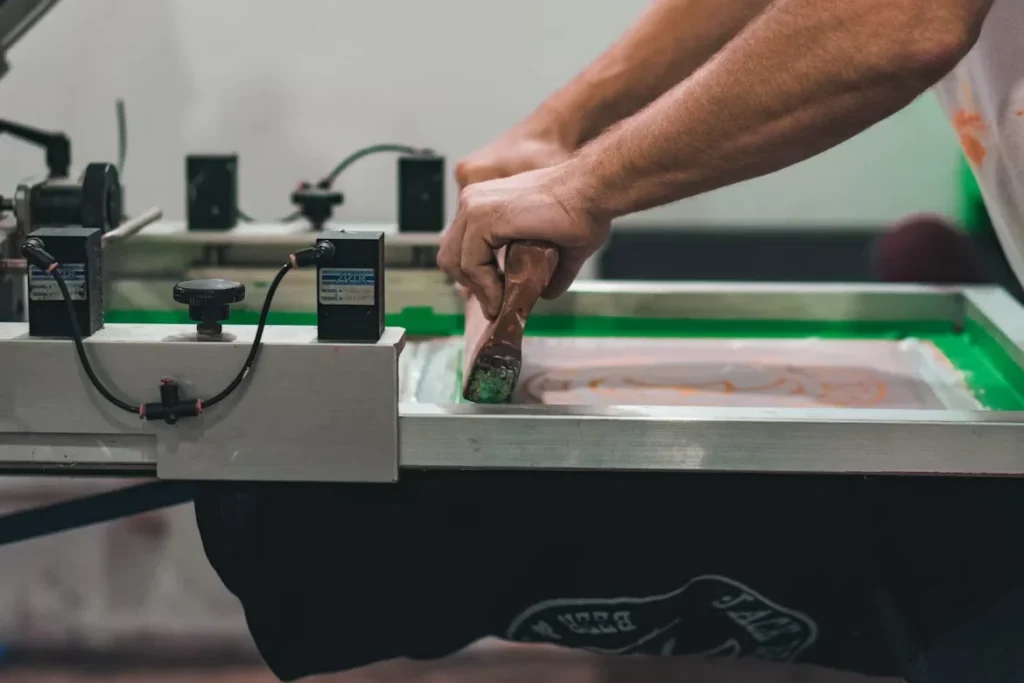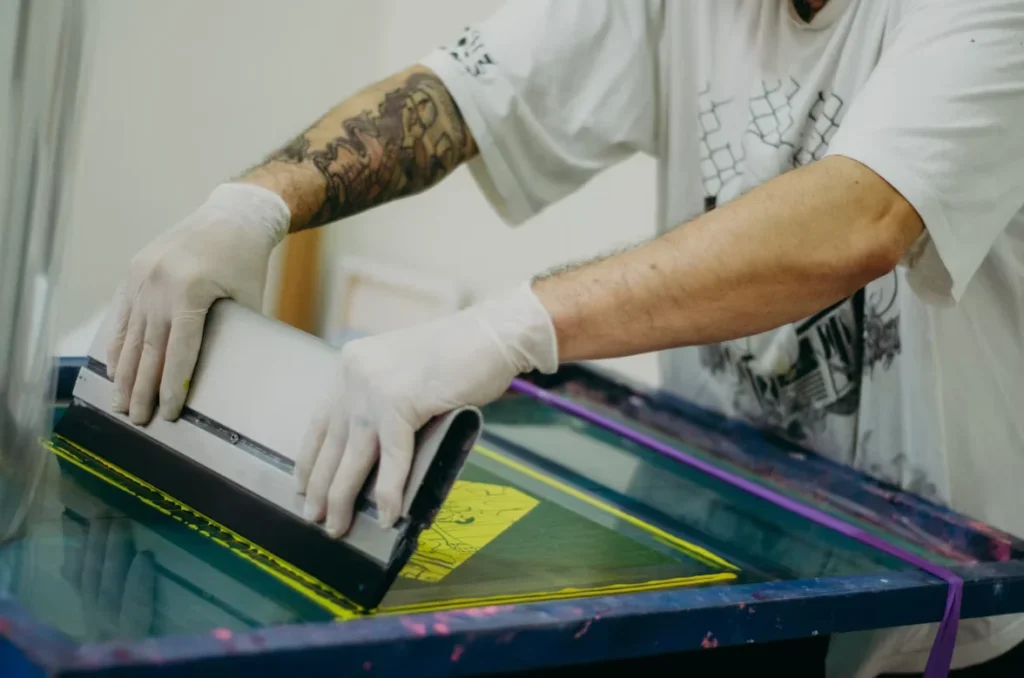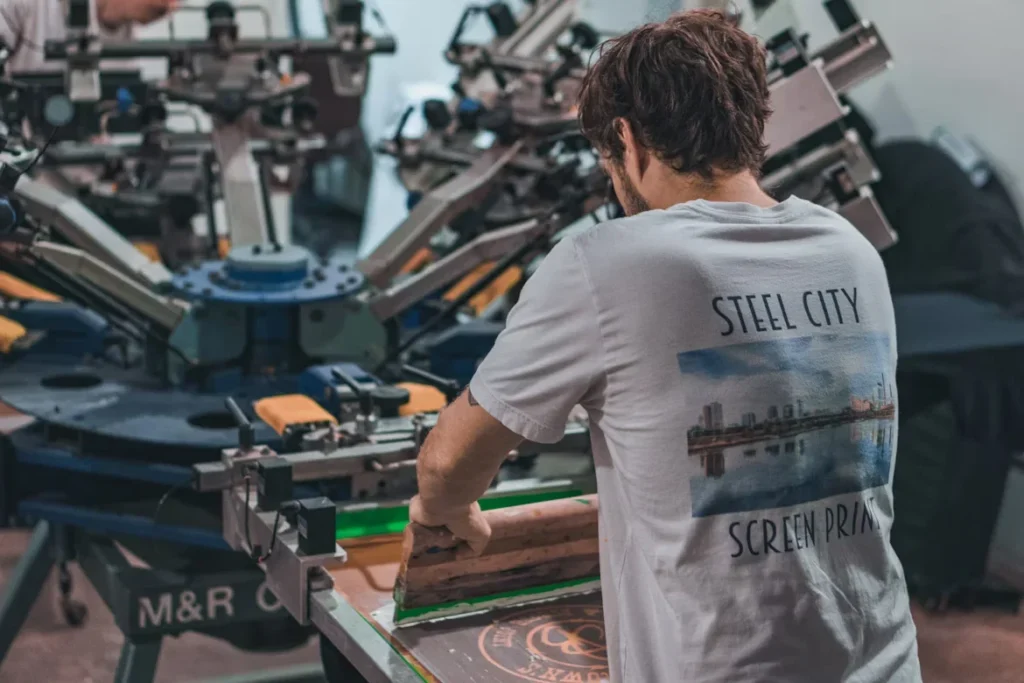Screen printing is a widely used technique for creating high-quality, durable prints on a variety of substrates. Advanced printing methods on fabric, paper, or any other material can add a rich color touch to your work and enhance your prints. In this article, we present the most essential techniques and best practices for achieving the whitest and most durable colors in Professional printing.
Understanding Screen Printing Basics

Without proper knowledge of the fundamentals of online screen printing, its higher-level techniques cannot be effectively employed. The process involves forcing ink through a mesh screen into a substrate, using a stencil to block areas where the ink is not intended to flow. Rich colors are achieved through a series of factors, including the quality of the ink, mesh count, screen tension, and the curing process.
Selecting Suitable Inks
The type of ink is a key factor in color vibrancy. Some of the basic types of ink are listed below:
- Plastisol Ink: Plastisol ink is renowned for its gloss and high opacity, which allow the colors to sit on the textile rather than be absorbed; hence, the colors become very shiny.
- Water-Based Ink: gentler and more environmentally friendly, these inks require thorough curing to maintain their brightness.
- Discharge Ink: This ink overwrites the material’s dye and introduces fresh pigment, creating full-color prints on dark colors.

For optimal results, use high-quality inks with good pigmentation to maintain vibrant colors and minimize their likelihood of fading.
Optimizing Screen Mesh and Tension
Mesh tension and mesh count on the screen are significant factors in determining the deposition of ink onto the substrate. Proper utilization of the screen mesh contributes to good color and detail.
Lower Mesh Counts (80-110): Suitable for under base printing inks, where a higher amount of ink can be allowed to pass through to achieve higher opacity.
Medium Mesh Counts (160-200): Ideal for overall design, with good ink flow and a balanced level of detail.
Higher Mesh Counts (230-305): Ideal for detailed work and halftones but may require multiple passes to develop rich color payoff.
Even screen tension helps ensure even ink application, preventing uneven prints and a lack of color vibrancy.
Using Underbase Layers for Maximum Brightness
To get colors to pop on dark-colored shirts, an under base can come in handy. This is achieved by printing a white or light-colored underbase first, then printing the design’s actual colors. The underbase serves as a primer to prevent the shirt from absorbing too much ink and the design from appearing pale.
For best performance:
- Use a high-opacity white ink as the under base.
- Flash the under base coat before printing more colors.
- Keep good registration to avoid registration issues.
Layering and Curing for Durability
Slight layering of inks can achieve maximum brightness. Wet-on-wet or wet-on-dry layering techniques enable uniform coating and seamless color blending, resulting in a smooth, seamless finish. Adequate curing is just as crucial to maintaining color strength and avoiding fading.
- Heat Press or Conveyor Dryer Curing: Plastisol inks must be cured at approximately 320°F (160°C) to achieve full hardness.
- Water-Based Ink Drying: This process involves slow drying and may require forced air drying or heat curing.
- Proper Curing Test: A simple stretch test can be used to determine whether the ink has cured adequately on the garment.
Color Mixing and Pantone Matching
Proper color mixing is essential to achieve consistent, vibrant colors. Expert screen printers typically use Pantone Matching System (PMS) guides to achieve precision.
- Utilize a Color Mixing Guide: This ensures mixed colors are bright and consistent from batch to batch.
- Add Opaque White for Pastels: Using opaque white to lighten colors instead of a transparent base helps maintain bright colors.
- Use Fluorescent Pigments for Vibrant Colors: Adding neon or fluorescent pigments will make your prints more intense.
Equipment Maintenance and Consistency
Regular screen, squeegee, and ink reservoir maintenance ensures consistent color brightness and clarity. A filthy or clogged screen will produce uneven ink laydown and impaired print quality.
- Clean Screens Cleanly: Debris disrupts ink flow and color accuracy.
- Replace Squeegees Regularly: A sharp, flat squeegee blade will yield uniform ink laydown.
- Stir and Store Inks Properly: The Settling of the pigment will have an effect upon color consistency, and therefore, stir inks before printing.
Vibrant screen print colors are achieved through a combination of quality inks, the right screen choice, layering, and curing methods. Get these right and maintain your equipment well, and you can look forward to bold prints that will remain so and endure. Whether you are a beginner or experienced screen printer, these best practices guarantee professional-looking prints every time.












